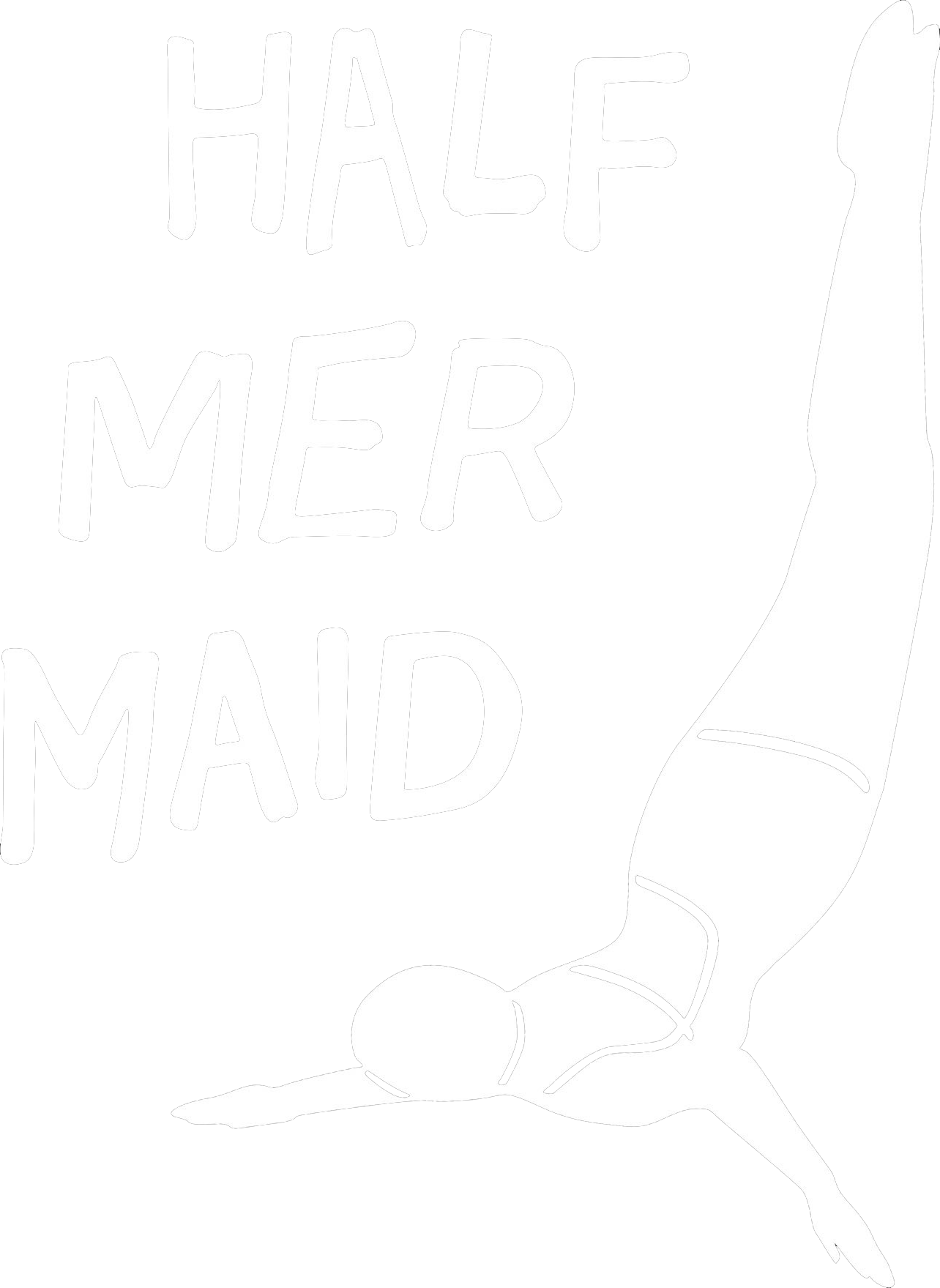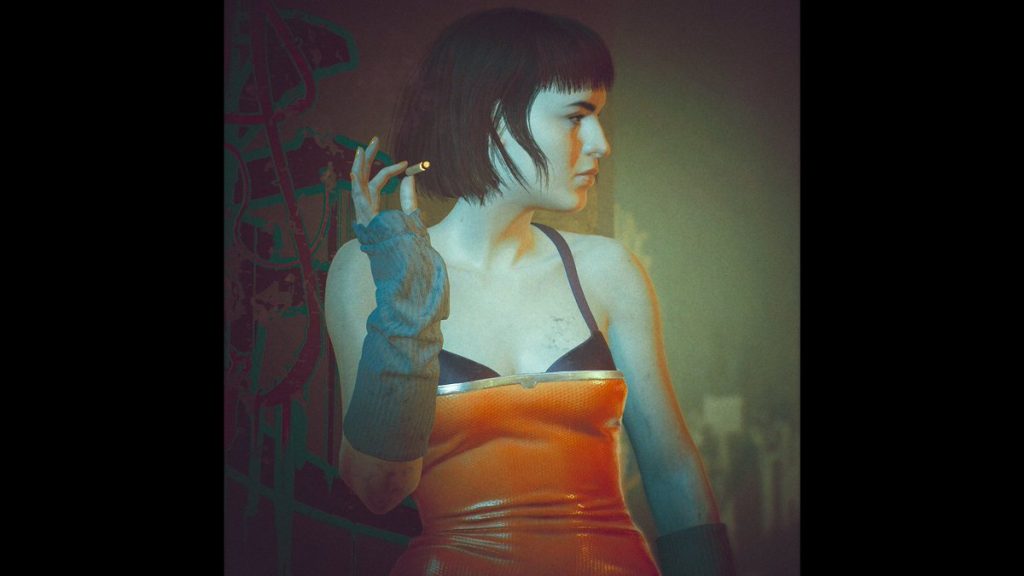
In this edition of our video game production blog, we talk to our founder Sam Barlow about what he’s listening to lately, a look back on the best games of the year, and what’s next for Half Mermaid after Project Ambrosio. The following is an edited transcript of a conversation between him and Jeff Petriello (our Producer). Listen to that convo here:
Jeff Petriello: Hello! Welcome to the Half Mermaid Production Blog. I’m Jeff Petriello…
Sam Barlow: …and I am Sam Barlow.
JP: We work at Half Mermaid – a game studio started by our guest for today, Sam Barlow himself. We’re here to talk about what we’re working on and how we work on it.
So Sam: it’s so nice to have you on as a guest of the Production Blog. Thanks for coming.
SB: Thank you for having me, for letting me in.
JP: Yeah, of course.
SB: This privileged space.
JP: Yeah, normally it’s a conversation between myself and Natalie Watson, our faithful associate producer here at Half Mermaid, but Natalie is out of commission for the time being, and we thought it would be great to have you in her stead.
A Rocky Start to a New Year
Let’s talk about the big news here first: it’s a new year. We are recording this, our first production blog of 2021. How are you feeling?
SB: I’m just so pleased that everything is now fixed.
JP: Oh my God.
SB: January 1st and everything overnight just calmed down. We can just get on with making video games.
JP: Really the full cream of the crop of anti-Semitic, white supremacists were out in full force on our capital. Nothing new for America, but definitely depressing. One thing I am grateful for is the amount of coverage this stuff gets. We really get to see it, and I hope reckon with it as a country. So I know I’ve been a little distracted this week for sure, and my heart goes out to everyone in our nation who feels disheartened. I am looking forward to feeling better about not only the political situation, but also the situation with the pandemic, by the end of this year. My hope is still strong.
SB: It was useful to me ’cause it helped me turn off Twitter for the day. I think it was the point where there was one of the protesters who had a sweatshirt that said “Camp Auschwitz” on it, and there were people on Twitter saying, “Well, hey, how do we know he’s not a survivor?” Yeah, I was like, OK this is not a useful discussion. This is silliness.
JP: We’re gonna keep making this game in hopes that there’s a country to release it into when we’re ready to do that.
SB: Yeah, we’re gonna hold it back until everyone’s behaving.
Unforgettable American Voices
JP: Normally, Sam, we talk about some interesting pieces of media that we’ve read, that we have watched or played, that really left an impression on us. So I’ll ask you: in the past month or so, what’ve you consumed that’s really stuck with you?
SB: I’ve been listening to a bit of music, which I would normally do anyway, but we’ve been thinking a lot about music and audio. I have a thing for interesting vocalists. I continue to go down the rabbit hole of Mary Clayton, who’s most famous for singing with the Rolling Stones, and was on the soundtrack to Performance, the Nick Roeg movie. She did some incredible stuff there.
Then I’ve just been listening to a lot of stuff by Jimmy Scott, who is this incredible vocalist that I think I had a career in the 50s and 60s. He disappeared for a good while, and then kind of re-emerged in the 90s. People might recognize that he did a track from the Twin Peaks soundtrack, “Sycamore Trees”, and I think was on Fire Walk with Me as well.
Jimmy has this incredible voice. He has some condition [Kallmann Syndrome] where he didn’t necessarily go through puberty. So as a fully grown man, he has this incredible voice that kind of floats around your expectations of what certain voices might sound like. It’s incredibly powerful. So, I’ve been listening to lots of that.
Judge, Jury, and Photographer
Game-wise, the way games work for me is that usually I’m too busy to play any. I kind of hate video games anyway, so that helps. Then we get to the end of the year and I’m on a bunch of juries. So usually during November and December, I’m sent every single video game that came out that year, and have to play them to decide what’s what. It’s usually the point where I force myself to sit down and play the big AAA blockbusters that I might have otherwise avoided. It’s usually kind of this extreme thing of like, “Oh, they’re still doing these things that annoy me”, but seeing interesting bits and pieces.

This year, there were two games that gave me a really interesting experience. I went straight from not-a-AAA game, Umurangi Generation, which is a game all year I’d seen people mentioning as being really cool. I didn’t really know what it was, but I knew that it had kind of a Dreamcast aesthetic, and people had mentioned it alongside Jet Set Radio. So I was less excited ’cause I just assumed from the way people were talking about it that maybe this is one of those indie games that takes a beloved game and essentially just clones it.
But really, it has little to do with Jet Set Radio – the aesthetic and some of the vibe maybe – but it’s this game where the entirety of the gameplay involves taking photographs in a 3D world. You’re running around these cool spaces and you have a sort of shopping list of stuff that you need to go take photos of.
As I’m saying this, I’m thinking about my favorite game of all time, A Mind Forever Voyaging. It’s this classic Infocom game where the gameplay would send you into this town and give you a shopping list of stuff that you had to do. So I’m realizing there’s a commonality there. But the reason people love this game is that whilst you’re taking these photos, there is a lot of story, atmosphere and theme that is communicated through the environment you’re in. Obviously people talk a lot about environmental storytelling, and this game is pretty much that: it’s just environmental storytelling. There are no cutscenes. There’s no dialogue. It goes some way to redeeming in-game graffiti, which has a bad wrap since the post-apocalyptic BioShock stuff where someone’s about to die and they write on the wall “COME SAVE US” or “CITADEL IS DOOMED” or whatever.

Here is some very fun graffiti. I really love that game, and I definitely recommend that people give that a go. If you do play it, definitely pick up the DLC. It adds like another 30% of gameplay to the end of it and escalates the scale. It feels like a full package with the DLC, not just an extension or something superfluous.
Cyberpunk 2077, the Underdog
I got really into that game and it has a cyberpunky feel, some kind of semi-dystopian near future vibe. So I went straight from that game into playing the contentious Cyberpunk 2077 , a game I was not inclined to want to like because of the discussion around it. Obviously, some of that discussion was around how the game was made, all those issues of crunch. Some of the marketing and the tone was, at points, pretty offensive. So I was all set to not like this game.
I booted it up to just give it an hour and proceeded to play this game as if it were Umurangi Generation. I’ve spent quite a bit of time playing the game now, but let’s say my first 10 or 20 hours was pretty much just walking around photographing stuff. For all of its sins, there is some incredible artwork – just the fidelity and some of the renderings. If you like weird, Blade Runner cos-play, this game has just a never-ending supply of gorgeous Blade Runner outfits. Everything is shiny or see-through, and it has incredible sequins and leather and plastic raincoats.
Umarangi kind of gave me an in to that game. I just literally took its approach to being in the world straight through to this game. I did a few of the quests just to get me out of the starting area, but then just spent a lot of my time walking around photographing stuff and side-stepping the very core gameplay. Then at some point, I found myself starting to do some of that gameplay stuff and ended up enjoying it very much.
I don’t wanna get into the discussion, ’cause for a while the Cyberpunk discussion was the less interesting discourse that was going on and it was very intense. But I grew up playing ambitious PC RPGs. For me, there’s a tradition that involves having to find custom config.sys files in order to get Ultima to work. That era of ambitious PC RPGs….they were all very broken and delicate. There was a lot of effort involved in getting them to run. So when I look at Cyberpunk in that context (and obviously I’m playing it on a semi-decent PC) I’m not seeing as many issues as I’m hearing about. In context, I don’t necessarily find those issues as troublesome.
Because of the bashing the game got, I almost found myself having a bit of an underdog thing towards it. I think that’s important as well. Removing it from the [Playstation] store, this whole question of refunds (which I think was definitely pushed as being a very kind of pro-consumer thing) – I think there’s an element there where the only people that helps are possibly at Rockstar and Ubisoft.
I think there was an element of this idea of games being “too big to fail.” If Rockstar spends $300 million making GTA the biggest game ever and make it so polished and gorgeous, you see the same thing with some of the giant scale of Ubisoft games. The idea is that you make these games so huge and you spend so much money on the marketing that they can only be a success. There was an element here of CD Projekt Red playing in that world and being told that they were picking up something too big and they should leave it to the big boys who are able to deliver this level of polish and execution.
So there was a little element there where I feel like the drubbing that Cyberpunk got (and there are genuine issues) kind of helps the case for Rockstar and Naughty Dog to justify the things that go in to making their games. But yeah, I spent a lot of time taking photos inside Cyberpunk and then kind of liking the characters.
JP: Yeah, and you have done a great job of sharing that on Twitter. I’ve really enjoyed your beautiful Twitter photo albums from that game.
SB: The general vibe is sad people sat in bars. It’s very noir. It’s very cyberpunk. You’ll just be walking around and be like “Oh, there’s a really cool NPC, just nursing their drink and just looking sad.”
JP: Yeah, I mean, to be honest, if you were to just look at your Twitter, I would be super pumped to play Cyberpunk. Unfortunately, I only have a PS4 currently, so I am waiting on grabbing that one. I learned my pre-order lesson way back with No Man’s Sky, which you know, turned itself around. I had a great time playing that game last year. So I’ll just wait a little bit. I am excited for it in it’s own way. I’m glad you shared your journey.
SB: It’s a big mix of things. I was discussing it in the context of game direction for some of these awards. It’s hard ’cause I think on one level, the scale of what they’ve pulled off is really impressive, but there are little bits and pieces [that are off].
I think this has kind of been discussed to death, but take the billboards in the game. There are adverts and billboards wherever you look, ’cause there’s this Blade Runner future. The tone of the game as a whole is actually really nice and heart-warming. I think there was a great article on VICE where they talked about this. For a game that comes off as quite edgy (or certainly edgelordy), the story of the characters and how they relate to each other is actually really nice and effective. The character that you play, no matter how you play them, is kind of a nice person. It’s not like a lot of these roleplaying games that give you the option to just be evil or awful. It’s actually this very straight, sweet kind of tale.
But amongst that, you have these adverts and it almost feels like there’s a different art team involved. Every single one of these adverts is really puerile and juvenile. They’re offensive, and they kind of tick off a lot of “isms.” You’re just walking through this world and soaking up this amazing detail, seeing these sad people nursing their drinks, and then you look up and there will be some ad that is just obsessed with genitals. Or there’s some ads for suicide prevention that are just really crass.
It’s the vibe you have in GTA where you have the PIßWASSER stuff. It’s that level of puerile satire that arguably kind of works in GTA because it has that tone. But also in GTA, they’re not in your face every meter you walk down the road because that’s the normal world. But here, where this is not as cynical a game as GTA (it doesn’t quite have the edglord at its heart that GTA has), it’s kind of annoying.

Also my daughter really wanted to play the game. She’s like, “Oh, you’re taking photos of all these cool people.” Then I got this cute little car in the game, this teeny little car that when you get in goes “Konichiwa!” in a little computer voice. My daughter just wanted to drive around in this car, but there’s just all this offensive stuff that’s flying past. I think Steve Gaynor listed it in his game of the year awards and he was like “please, somebody make a patch that will fix the billboards” because that would elevate the whole thing.
JP: Yeah, it sounds like a little bit of a mess. But messes can be beautiful. I’m excited to play it eventually, but I’m definitely going into it with a mind towards all the healthy criticism that it has received. Especially with a mind towards the people who made it and that terrible experience.
SB: While you wait, you can play Umurangi Generation and not feel nervous about playing that one.
JP: I can’t! I don’t have a PC. I need to solve this issue.
SB: It’s coming to Switch at some point.
JP: I would love to play that game on switch. That sounds great.
Gay Stuff!!
I wanted to share a little graphic novel that I read. It is extremely not safe for work. It is called Cheat(er) Code and it was written by S. A. Foxe and the art was done by Daz. I wanted to share it because it is a queer breakup tale set in a fictional video game universe.
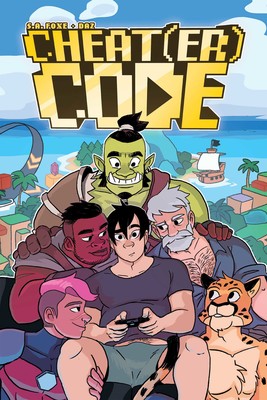
Again, I will reiterate, this is not for everyone. It definitely involves a lot of cartoon nudity and graphic depictions of queer sex, so if that’s not your bag, it’s maybe not for you. But if you enjoy those things, I must say: I laughed; I cried; I was turned on; it was amazing. So it was a really kind of a silly, fun, exciting read.
I think any sort of LGBTQ member of the gaming scene would enjoy it. It is 90% focused on cisgender males, but also non-humans. There are trans bodies depicted. So it’s just a nice slice of queer culture in a space that doesn’t normally get to see it. I really wanted to shout out Cheat(er) Code. You can purchase it at your local bookstore. I called my local bookstore; they ordered it for me; I swung by and picked it up. I just was really delighted by it. So I wanted to share that with everyone.
Jacob’s Ladder is Canon
I also wanted to talk about a film that you recommended I dive into, which was 1990’s Jacob’s Ladder directed by Adrian Lyne and starring Tim Robbins. It is a very messed up story about a Vietnam War veteran who is experiencing breaks in his reality.
It was a really disturbing film. I am an Adrian Lyne fan, but I had never seen it before. It definitely checked a box off my bucket list and gave me a lot to think about just in terms of storytelling structure, memory, trauma – a lot of the themes that we have been talking about generally at Half Mermaid and specifically on Project Ambrosio. And as we think about future games that we wanna work on, these themes keep coming up, so it really seems like a central piece of fiction that I will keep going back to as we continue to explore. So if you haven’t seen it, I definitely recommend it. I wouldn’t say it’s a pleasant experience, but it’s a really impactful one.
SB: It’s kind of a canonical work. Silent Hill basically, at a point, heavily, heavily borrows from Jacob’s Ladder. I think Silent Hill 3 has whole sections that are almost lifted wholesale from it.
So the influence it’s had on gaming is pretty huge. But it’s fascinating as well, because if you think of Adrian Lyne, generally his films have been in the drama, thriller, erotic thriller world. Having this one horror title in there is pretty cool. There’s that disgusting thing that we [as a culture] went through of “elevated horror“, where it’d be like, “Oh, here comes this director who doesn’t normally do genre stuff,” and they’d do a horror movie. I don’t feel like [Jacob’s Ladder] had that perception at the time, but it’s great to see [Lyne] bring his visual imagination to that.
He did some really cool stuff with borrowing from photography and some very specific artists where he took some of the imagery that they used and found a way to put that on the screen. The whole thing he does with the long exposures and shaky, blurry visuals that you get as the characters lose their sense of reality – I think has now become essentially a staple.

The screenplay was written by Bruce Joel Rubin. It’s the same guy who wrote Ghost. He kind of had this little streak in the 90s where he was doing high-concept supernatural stuff, but you can definitely feel the different tone that Adrian has in it. His set dressing and mise en scène is just so dense and dusty and beautiful.
JP: Well his set dressing are always so evocative and “real” feeling. This is no exception to that. It’s really beautiful in that sense. It also reminded me a lot of The Watcher, the Charles Maclean novel that we have discussed on this cast previously, just in terms of its dislodging of reality for the main character. I really loved the synergy I felt between those two works as well. So if you listened to me a few months ago and got into that Maclean book, Jacob’s Ladder is a great follow-up.
The Barlow Guide to Playing with Reality
SB: I think they both do a thing that I rate quite highly: playing this game of what is real. A film that I think does it badly is a beloved film: The Truman Show. It has this concept that a character is essentially in a TV show, doesn’t realize it, and this whole fake world has been created around him. So you’re dealing with this theme of “what is reality is what I perceive to be real”, and this is a very primal, interesting theme. But what The Truman Show does for me by defining the true reality to be outside of the TV show [SPOILER] (and at the end of that movie, the character reaches the edge of his world and escapes into the real world) it essentially just becomes a prison movie or an escape movie in which the character is escaping to the true world.
When I was younger, I was obsessed with Philip K. Dick, and a lot of what he does is essentially an infinite recursion. You never get to the true reality. A famous example of this recently would be Inception, the spinning top at the end of Inception, to which a lot of people will kind of groan that we’re leaving it all unresolved. But I honestly think if you resolve these things – if you establish Yes or No, this is the baseline reality – it doesn’t quite have that primal power.
I think with both The Watcher and Jacob‘s Ladder there is a theory you can go with as to what is actually happening, but there are some compelling alternatives.
To go into Jacob’s Ladder without spoiling it: this guy is a Vietnam vet. He and some of his colleagues or his squad-mates were given some experimental drugs in Vietnam, and so one of the theories is that the drugs they took have had this effect on their health and maybe the things that they’re seeing and the visions they’re having are because of this. There are other things going on in the story and theories as to what’s happening, but I love it when one of these kind of reality-bending stories doesn’t give you an easy out or an easy answer. I think the true horror of that primal question of “what is real?” gets more play. So that’s kind of always a touchstone for me in terms of movies or stories that are playing around in that world.
Purgatory is a Spreadsheet
JP: Speaking of true horror, why don’t we talk a little bit about the progress we’ve made on Project Ambrosio since we last spoke. That would have been over the turn of Q4 into Q1 2021. What kind of problems have you worked through that you can share with our audience about the development of our next big game?
SB: We’ve been doing a lot of things. At points, I’ve been very deep in very complicated spreadsheets. That’s the place where I toil. It’s not necessarily a place I love to be. Obviously, previous games have been quite complicated in conception, but there have been points where I questioned myself on this one because of the layers. I’m having to stop, breathe, and just try and get purchased in what layer and context I’m working. So I’ve been soldiering through that.
I think the most exciting stuff is polishing up and focusing on some game-feel aspects. We’re putting together a build that we can share with console partners and other interested parties so that they can actually go hands-on with this thing that previously we’ve only described. We wanna put something in people’s hands so they can answer “what does that actually play like?”, “how does that work?” There are a few things in this game that I think are magical and we’ve sold them as being magical, so getting to show people that is exciting.
We’ve been bringing in some audio, doing some work on controller tweaking and playing with some of these core game mechanics, and that’s been really exciting. Some people are surprised that given, from the mile-high view of the stuff I do – “Oh, it’s narrative stuff. It’s non-traditional game stuff” – that I am so obsessed with Nintendo games and so obsessed with game-feel. But for me – the more out-there you’re going, the more you’re asking of the player – the more important it becomes. The very core experience of what they’re doing with their controller, how it feels, what the feedback loop is – that stuff needs to feel really tight.
JP: As we set a deadline for ourselves to have what you would think of as a more traditional demo ready in the early part of this year, bringing all those pieces together has been really exciting. I just can’t wait. As we start this year, we’re thinking about putting all the pieces together to get the actual shoot going at some point this year and seeing how that will combine with what we have in the prototype. It’s just so exciting. So yeah, it’s definitely been a really cool moment of dev to see all of this and have more partners start to be involved. Like you said, a lot of the audio work that we’ve been doing over the past four weeks or so has been really exciting. It feels just like it’s going in the next level, which is cool.
SB: It’s been good to do it remotely as well. I’m not sure if this is what Nintendo calls it or just what people that ape Nintendo call it, but the “figure of eight” test is a thing that was always drilled into me. If you’re making a conventional character game, the test is to just boot the game up and run the character around in a figure of eight. From a game-feel perspective, that in itself should be inherently fun. Certainly, if you look at something like Mario, it’s all there, right? I remember watching my son when he was too young to really get the objectives of the game, he would just sit and run Mario around and have a blast.
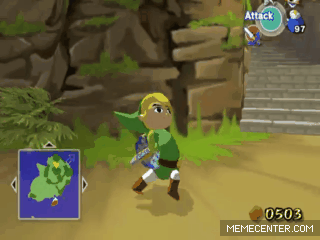
So in the context of this game, I sat yesterday for couple of hours just playing with the very core mechanic here over and over again, getting a feel for it. If we’ve been physically in the same space, in an office, you might have started to question that Sam’s still sat there just fiddling and going back and forth with this thing.
JP: It can be difficult. Obviously, we haven’t shot this project yet. We do not have final live action footage. We’re separating the content from the mechanics at this early stage in a way that can be a little nerve-racking. So trusting in that strength, it also really lets us isolate developing those mechanics to be entertaining in and of themselves. It’s both a blessing and a curse, I think.
Spiritually Succeeding Silent Hill: Shattered Memories
If you have been paying attention to Sam’s Twitter, or the Half Mermaid Twitter in the Fall of 2020, you might have noticed a scandalous tweet that went out in regards to Silent Hill: Shattered Memories and potentially creating a spiritual successor to that game.
Obviously, a lot of the themes of Silent Hill: Shattered Memories and the series in general are things that we love to explore, just generally speaking as a studio. It’s been really exciting since the last podcast that we’ve begun a journey to see where that might take us past Project Ambrosio. So I was wondering if you wanted to shed any light on thinking past the next big live action game. What’s next? Are we doing any explorations that are exciting you?
SB: One of the things that was exciting to me about this iteration of the company, and starting to work on Project Ambrosio, was trying to get beyond the very, very small scale indie dev thing of working on one project exclusively, and once that’s done, moving on to the next one. In some ways that makes things more straight-forward, but it can also be more intense because you live or die by the one project. You have this myopic view. We wanted to make [Half Mermaid] a place where we have one or two things going on at once, which I think can be a very healthy thing. So you’re kind of moving between the games, and they each give context to each other.
Since last year, we’ve been exploring an idea that I’d have for a while with some tweaks to it . I foolishly referred to on Twitter as being a Shattered Memories spiritual successor, which then led to many digital column inches of people getting excited. We’ve begun to take that further in recent months and doing more work on that. It’s been good to see that actually, it really is digging into concepts from that game. The more we dig into what’s unique about this concept, the more I keep being reminded of what we were trying to do on that game.
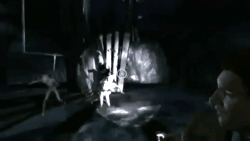
Silent Hill: Shattered Memories / Climax Studios
Again, timing-wise, November/December is when I play all these games for these juries. I’m kind of forced to confront video games as a medium. I sit and I play everything and I’m like: “Well, these are the things that are being held up as the best of the best.” Obviously, a lot of the awards that I sit on are usually narrative themed or direction themed, so it’s very much of my area. I see the current bar, the things that are interesting.
At the time, Shattered Memories was a game with which I was having this big dialogue (or argument) with myself about the idea of video games. Shattered Memories was a love letter to the immersive 3D games that I loved and grew up on. It was a love letter to Looking Glass games, a love letter to the Metroid games, as well as doing a bunch of other narrative stuff. Part of the jumping off point for it was questioning what even is the protagonist in a video game.
The popular mainstream idea was that a video game character is a wish fulfillment vehicle, a blank slate that you can just use to live out your fantasies. At least, that’s how the marketing people and the execs tended to want to talk about it. I’ve had endless arguments with powerful people who’ve said, “in order to sell this video game, the character needs to be, to some extent, wish fulfillment for a teenage boy.” Every character essentially then becomes a superhero where it’s about doing things you couldn’t do [outside the game]. So that game was very much me exploring some ideas pushing against that, of playing with the relationship between me sat on the sofa playing the game and the character in the game.
Obviously, after that, with things like Her Story, I started to push even further in a different direction. Her Story was about questioning the idea of causality and systemic richness in video game narrative. Her Story has no branches, no cause and effect. It has very little variable tracking, but still tells a very immersive, subjective story. So I’m coming back around to seeing what kind of 3D action game I want to make having been through the experience with these other games. It’s been interesting because it really is directly digging into those questions.
Playing all of the AAA games from last year has also been very much part of this work. I’ve been questioning what stories need to be video games. Is the relationship between me and the protagonist creating interesting questions? Is this an interesting relationship? What are these game mechanics doing? So yeah, it’s going to be interesting to continue to develop this idea.
JP: Yeah, for sure. And I’ve had a ton of fun reaching out to potential concept artists, studios, just to get some ideas flowing for what this next project might look like. If there’s anyone out there dying to work with us, we’re always just an email away: [email protected]. You can always reach out to us.
How to Hear More
If people want to follow the development of both Project Ambrosio and what you’re doing next, what’s the best way for them to do that?
SB: What they should do first, before they put the phone down or the computer down straight away, is wishlist the game on Steam. Then get your friends and extended family to also wishlist the game. Just that silly number going up makes us feel good inside. That’s all it’s for. Then they can follow @halfmermaid on Twitter. They can follow me @mrsambarlow on Twitter. We have a newsletter which we generally try and do monthly. We didn’t do one in December, ’cause I don’t think anyone needed an extra newsletter to be sent out in December. I think everyone was fine just hunkering down. We’ll get back on that soon. That’s where I will be giving little hints. I think we’ve already dropped a few. And as we move through this year, we’ll hopefully be a bit more vocal about exactly what it is that we’re working on.
JP: I look forward to that as well. If you wanna keep in touch with me, as always, you can follow me @thebeff pretty much everywhere on social. And as usual, we are always looking for feedback: what do you wanna hear on our production podcast? Shout us out your thoughts and cool things that we should check out to read and watch too. Thank you to everyone who is listening and made it this far. We really appreciate it, and I hope your 2021 is off to as good a start as it can be given the circumstances. Thanks so much.
SB: Bye everyone!
